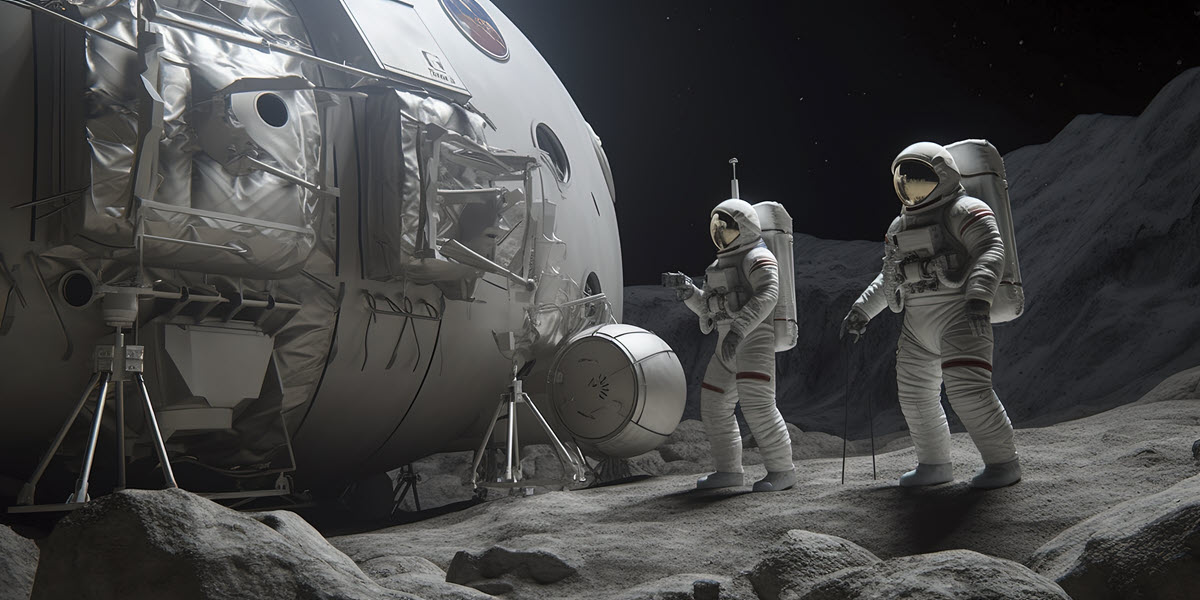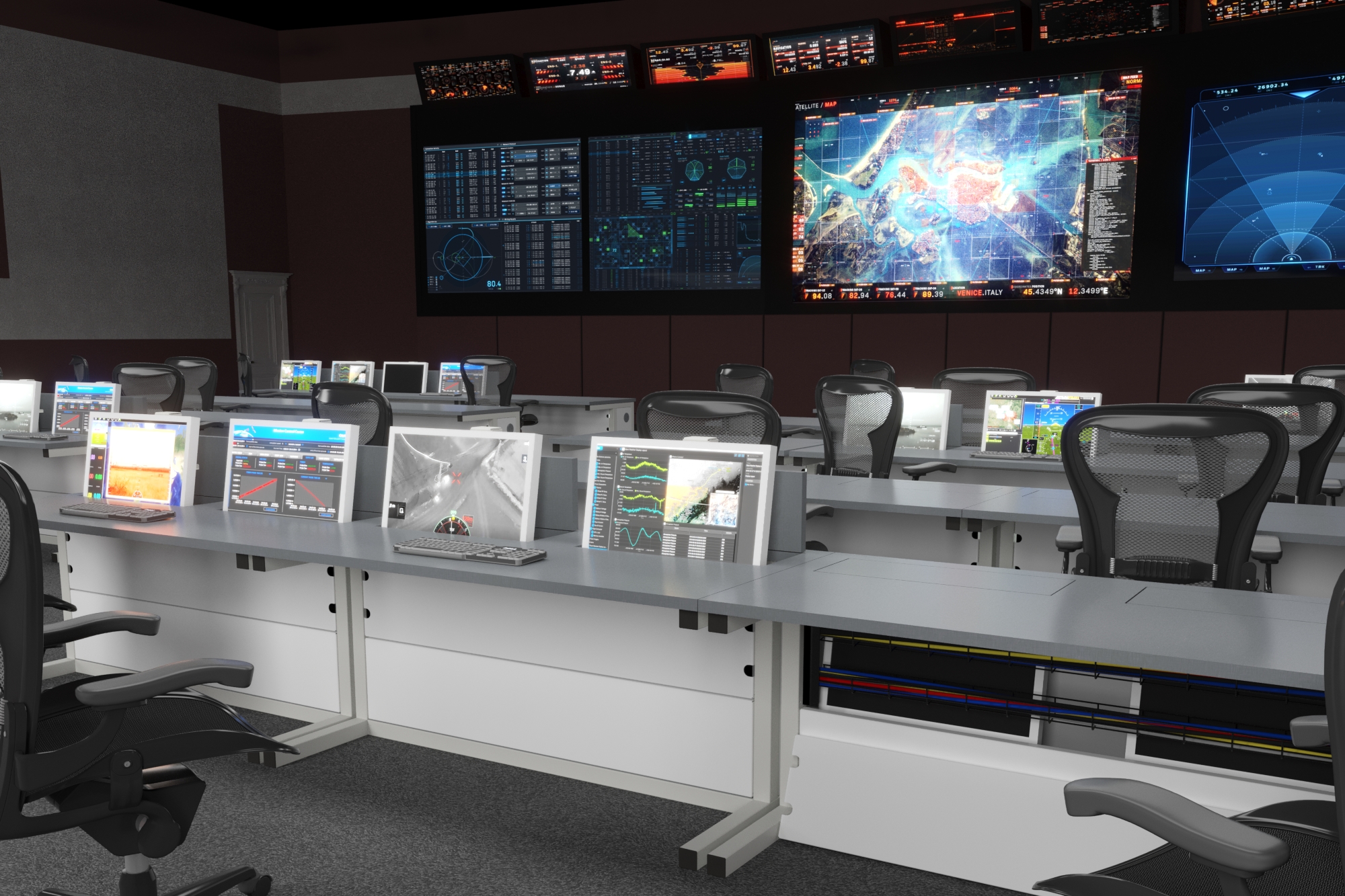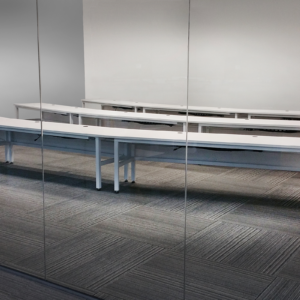Our Fascination with the Far Side of the Moon

There are dozens of moons in our solar system, but did you know that 20 of the largest moons share a surprising feature – a characteristic rotation rate created by “tidal locking?”
Tidal locking (also known as captured rotation) is the phenomenon that occurs when an orbiting body (such as our Moon) reaches a rotation rate that exactly matches the time required for it to orbit around its main host planet (in our case the Earth).
It’s because of this synchronous rotation that we only see the “near side” of the Moon and never the “far side.”

It wasn’t until the early days of the Space Race that humans first saw a photo image of the far side of the moon – taken by the Soviet Luna 3 spacecraft in 1959.
The far side is surprisingly different.
It’s easy to see that the far side has significantly more crater features – and fewer of the relatively smooth expanses known as lunar “maria” (Latin for “seas”), which make up nearly a third of the surface topography of the near side facing Earth.
Some of these craters are quite deep, such as the 60-mile-wide crater Daedalus, which has given some astrophysicists the idea of one day building a dish-style radio telescope on the site. The far side of the moon would have an unobstructed view of space, and its orientation would block out the loud radio chatter emanating from Earth. The 2-mile-high rim surrounding Daedalus would also help protect the site from stray signals from orbiting satellites.
Another area of great scientific interest is the lunar south pole, which has one of the largest impact crater zones in the solar system. Known as the South Pole Aitken Basin (SPA Basin), it’s approximately 1,600 miles wide (!) with depths ranging from 4 to 5 miles.
The extreme geological formations found at the south lunar pole have large mountains that are perpetually bathed in sunlight and deep craters that never see the Sun (including the Shackleton crater, which instruments indicate is over 2.6 miles deep).
This has led to scientific speculation that these craters could contain significant concentrations of ice, which, if true, could potentially serve as a water source for human explorers.
Scientists have also postulated that the far side of the moon could harbor recoverable amounts of Helium-3 (a relatively rare isotype on Earth), which could be used to power fusion reactors.

Chang’e 6 – The First Successful Mission to Retrieve Samples from the Far Side of the Moon
China and India have been in a space race to investigate the far side of the moon.
India’s space program has launched three Chandrayaan (mooncraft in Sanskrit) missions to the far side of the moon to probe the area around the Shackleton Crater. The first mission in 2008 successfully impacted the surface (as designed), while Chandrayaan 2 (in 2019) suffered a failure during a landing mishap. Chandrayaan-3 in 2023 performed a successful landing, delivering a rover craft that explored the surface for its designed life of one lunar day (14 Earth days).
The Chinese space program has had 6 missions to date, starting with Chang’e 1 in 2007, which scanned the lunar surface. Chang’e 2 followed in 2010, mapping the surface in more detail and then testing the potential for a stationary orbital transmission station to support spacecraft landing on the far side of the moon. Chang’e 3 (2013) and Chang’e 4 (2018) successfully landed lunar rovers on the near side and far side of the Moon, respectively. The Chang’e 5 two-phase program tested a sample return mission in 2014 and 2020, successfully retrieving over 60 ounces of lunar surface material collected from the near side of the Moon.
The next mission, Chang’e 6, put all the pieces together.
Launched on May 3, 2024, Chang’e 6 successfully landed in the Apollo basin on the far side of the moon (within the greater South Pole-Aitken impact basin), where it successfully deployed the Yidong Xiangji lunar rover equipped with an infrared camera to investigate the lunar landscape.
A month later, the lander spacecraft separated and began its successful ascent, returning to Earth with the world’s first samples taken from the far side of the Moon.
It is hoped that these samples include material that was ejected during the South Pole-Aitken crater impact, potentially offering researchers new insights into the early geological history of the far side of the Moon.
Now that there are samples taken from both lunar hemispheres, one of the primary investigations will be comparing the samples retrieved by Chang’e 5 (from the Apollo basin on the near side of the moon) with the new samples taken by Chang’e 6 on the far side.
If the two sets of samples prove to be sufficiently similar, this could support the theory that the moon was created about 4.5 billion years ago during a cataclysmic event when a large single object (as large as the planet Mars) crashed into the Earth, ejecting molten material into space that subsequently coalesced, forming the Moon.

Will American Researchers Gain Access to Samples Collected from the Far Side of the Moon?
American astrophysicists are undoubtedly jealous of the research opportunities that these lunar samples offer their Chinese colleagues.
Little known is that there was an opportunity for NASA astronauts to land on the far side of the Moon during the Apollo program. Astronaut Harrison Schmitt argued in favor of having the final lunar landing mission, Apollo 17, land on the far side of the moon in the Tsiolkovskiy crater. To be fair, this would have been a major technological challenge in 1972, given the need to position a communication satellite beyond the moon to allow astronauts to stay in contact with NASA mission control. This audacious program idea was abandoned due to its technical complexity and extra cost in favor of the final landing site, the Taurus-Littrow highlands and valley area on the near side of the Moon.
What have the Chinese astrophysicists discovered so far during their lunar missions?
Reportedly, the Chang’e 4 rover in 2019 was able to identify geological structures at a depth of 1000 feet under the far side of the moon using a two-channel ground penetrating radar (doi 10.1029/2022JE007714). According to lead researcher Jianqing Feng, the results pointed to a hidden crater and five distinct subsurface lava flow structures located deep under a surface debris layer of dust, soil, and broken rocks.
Chang’e 4 also performed biological experiments on the far side of the moon, including evaluating the growing characteristics of live species sent from Earth, including a cotton plant, rapeseed, a potato plant, yeast, and a flowering Arabidopsis, plus a live fruit fly.
Additionally, Chang’e 4’s mission accurately measured the surface temperatures of the far side of the moon for the first time, estimated to range from 260F during the 14-day long “lunar day” that plunges to negative 297 during the 14-day long lunar night.
Will American researchers gain access to any of the 4.4 pounds of lunar material collected by the Chang’e 6 mission?
Politics may interfere.
While the China National Space Administration’s director of international cooperation, Liu Yunfeng, has offered an opportunity for international researchers to participate, American scientists may find their participation limited by the so-called Wolf Amendment, which prohibits NASA from cooperating with the Chinese space program – unless clearance is issued by the FBI.

When Will American Space Missions Return to the Surface of the Moon?
A plan to return American astronauts to the surface of the Moon for the first time since the Apollo 17 mission in 1972 was initiated in 2017.
The initial Artemis 1 mission, a test flight of the updated Space Launch System (without humans aboard) was delayed for several years, finally taking place in 2022.
Artemis 2, a test mission with a human crew, is still planned for 2025. This will be followed by Artemis 3, a human-crewed lunar landing.
A new supporting space station dubbed the Gateway, which will orbit around the Moon, is now planned as part of the 2028 Artemis 4 mission. Artemis 5, which will test the new Blue Moon Lander, is scheduled for 2030, with Artemis 6 following in 2031. After that, NASA says it plans annual lunar missions.
Unfortunately, there are many doubts about this schedule, including the opinion of the NASA Inspector General, who reportedly calls it unrealistic.
So American researchers looking for insight into the far side of the Moon might want to pin their hopes on the Lunar Surface Electromagnetics Experiment or LuSee-Night. This mission, expected to launch as soon as early 2026, will send the new Blue Ghost lunar lander to the far side of the Moon, where it will deploy the LuSee-Night instruments to measure electromagnetic waves emanating across the Universe.
It is hoped that the sensitive instrument, shielded from the loud radio noises of Earth, will be able to capture electromagnetic waves dating back to the time of the Big Bang, offering researchers new insight into the history of the Universe.

Formaspace is Your Laboratory Research Partner
Evolving Workspaces. It’s in our DNA.
Talk to your Formaspace Sales Representative or Strategic Dealer Partner today to learn more about how we can work together to make your next construction project or remodel a success.


















